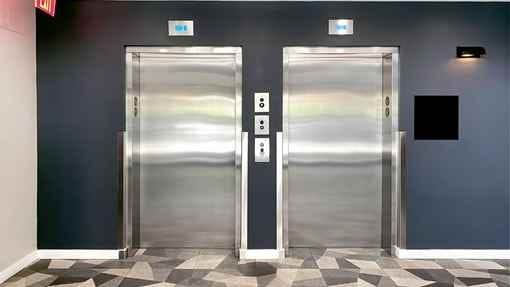Leading Lift Companies in London: Providing Exceptional Service and Assistance
Leading Lift Companies in London: Providing Exceptional Service and Assistance
Blog Article
Digging Into the World of Lifts: Typical Problems Faced by Numerous Lift Systems
As we navigate via the vertical transportation systems of modern-day buildings, lifts stand out as an essential part of our daily lives. From hydraulic elevators to traction systems and machine-room-less styles, each lift kind comes with its collection of usual concerns.
Hydraulic Elevators
Hydraulic elevators, usually preferred for low-rise structures, utilize fluid stress to manage the movement of the elevator auto (lift repair companies). This mechanism entails a hydraulic pump pushing oil right into a cylinder, causing the lift to relocate the preferred direction. While hydraulic lifts are understood for their quiet and smooth operation, they do include their very own collection of typical concerns
One prevalent problem with hydraulic elevators is oil leakage. Furthermore, problems with the control system, such as malfunctioning shutoffs or a malfunctioning pump, can trigger interruptions in the lift's movement.
Regular maintenance and prompt repair work are important to make certain the smooth performance of hydraulic lifts. By resolving these usual concerns proactively, structure owners can reduce downtime and guarantee the safety and efficiency of their upright transport system.
Grip Elevators
When thinking about vertical transport systems in structures, one more common kind apart from hydraulic lifts is the grip elevator. Grip lifts operate using a system of ropes and weights that relocate the elevator automobile by gripping onto the hoist ropes. This mechanism permits for smoother and quicker vertical transport compared to hydraulic systems.
One of the common problems faced by grip elevators is rope wear. The constant motion of the ropes within the traction system can bring about put on and tear in time, possibly triggering the lift to breakdown or become harmful for use. Regular assessments and maintenance of the ropes are essential to make sure the elevator's correct functioning and safety and security.
One more concern that traction lifts may run into is connected to the control system. Problems with the control system can cause issues such as unpredictable motion, hold-ups in feedback times, or perhaps full shutdowns. Normal screening and upkeep of the control system are important to avoid such problems and make certain the elevator's integrity.
Machine-Room-Less (MRL) Lifts

One of the vital components of MRL elevators is the small gearless grip maker that is mounted within the hoistway. This equipment effectively drives the elevator vehicle without the demand for large equipment located in standard grip elevators. Furthermore, MRL elevators usually use disabled platform lifts prices uk a weight system to balance the car, more enhancing their power performance.
In spite of their benefits, MRL elevators may encounter challenges associated to repair and maintenance because of the confined area for tools installation. Availability for servicing components within the shaft can be limited, needing specialized training for technicians. Appropriate maintenance schedules and routine inspections are important to make certain the continued smooth operation of MRL lifts.
Overloading and Weight Restriction Issues
Are lifts equipped to take care of excess weight lots efficiently and safely? Straining and weight restriction issues are critical problems in elevator procedures. Lift manufacturers design lifts with certain weight capabilities to guarantee traveler safety and security and tools long life. Exceeding these weight limits can result in different problems, including mechanical failures, delays, we maintain lifts and safety risks.
When elevators are overloaded, it places too much pressure on the electric motor, cable televisions, and other elements, possibly causing malfunctions or malfunctions. Security systems such as sensors and overload sensing units remain in place to avoid elevators from moving if they detect excess weight. In addition, surpassing weight restrictions can result in increased power usage and wear and tear on the lift system.
To reduce straining problems, building supervisors ought to plainly show weight restrictions in lifts and educate passengers on the value of adhering to these constraints - lift repair companies. Routine upkeep checks by qualified technicians can likewise help make sure that elevators are running within safe weight criteria. By attending to overloading and weight restriction problems proactively, structure owners can improve lift security and performance
Electrical System Failings
Surpassing weight restrictions in elevators can not just lead to mechanical problems yet also potentially add to electrical system failings within the lift framework. Electrical system failings are a critical issue in lift procedure, as they can cause unforeseen closures, breakdowns, and even safety and security hazards. One typical electric concern is the overheating of components because of too much existing flow triggered by overwhelming the elevator beyond its capacity. This can lead to harm to the circuitry, control, or electric motor systems, causing pricey repairs and downtime.
Furthermore, power surges or fluctuations in the electrical supply can also disrupt the elevator's procedure, influencing its efficiency and safety and security. These electric disturbances can damage delicate lift elements such as control panels, circuit card, or sensors, resulting in system failures. Regular upkeep and evaluations are important to identify and address potential electrical issues quickly, ensuring the reliable and risk-free operation of elevator systems. By adhering to weight limitations and carrying out routine electric system checks, building proprietors can alleviate the risk of electric failings in elevators.
Verdict

Hydraulic elevators, frequently favored for low-rise structures, utilize fluid stress to manage the activity of the lift vehicle.When considering vertical transport systems in buildings, one more common kind aside from hydraulic lifts is the traction lift. Traction lifts operate using a system of ropes and weights that move the lift vehicle by clutching onto the hoist ropes. Unlike conventional lifts that need a different device area to house the devices, MRL lifts integrate many of the components within the shaft, removing the need for a committed device area.In conclusion, lifts encounter common concerns such as hydraulic malfunctions, grip system failures, and electrical system issues.
Report this page